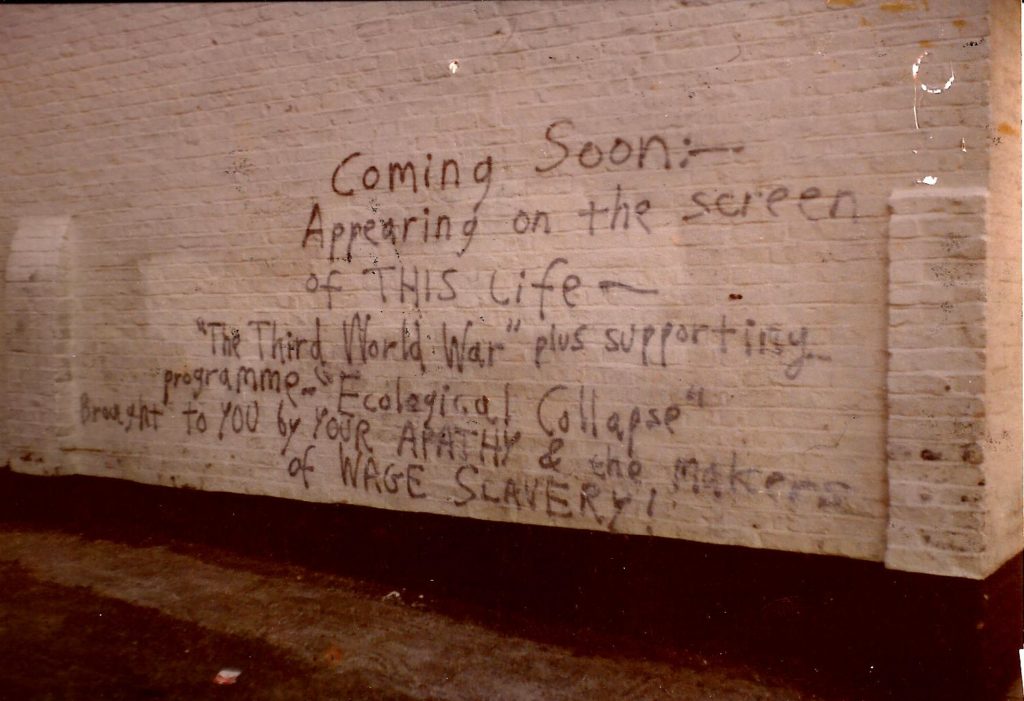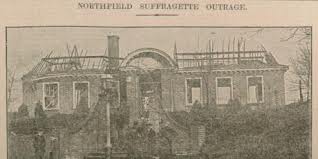20/12/19:
12/10/19:
Protests throughout world, though totally lacking in any perspective other than trying to influence the destroyers of the planet not to destroy it The “Midas Touch” which capitalism has long seen as something positive, in its over 3000-year-old myth was considered as a warning to those who would turn everything into gold, as the king even turned food into inedible gold and eventually turned his son into gold, finally dying of starvation. This is something that capital is increasingly realising for an increasing majority of people – it’s in the nature of political economy, the power to transform everything into a commodity (already 22,000 kids worldwide die each day because of malnutrition and easily curable diseases, because of their need for money which they don’t have). Without a vision of destroying commodified social relations, of destroying the need for money through the expropriation of the expropriators, extermination rebellion will break on the rocks of its contradictions. See below.
3/10/19:
UK, London: Extinction Rebellion try to cover Treasury with fake blood but bloody themselves (video)

Better targeted spraypaint: graffiti on cinema mid- 1970s
Re. Extinction Rebellion, see this (from 15/4/19) interesting initiative – an alternative to Extinction Rebellion’s jail-fodder actions “Our main route consisted of visiting and blockading various locations with functional significance for capital and resource transactions in London – the Stock Exchange, the Bank of England and the Metal Exchange. Along the tour we also stopped off at other points of interest – banks, courts, the church of Scientology – either chosen by particular comrades in the moment, or by the police who, due to not having any idea of our plans, kept running to protect buildings we hadn’t previously considered trying to get into.” The flyer they produced for their march-cum-blockade, however, is a typical lowest common denominator of correct line anti-capitalism, coming from the eclectic mix of its members, which doesn’t even begin to try to confront the contradictions of ecological ideologies and movements – perhaps for fear of being unpopular. More about them here. Meawhile, this shows clearly the capitalist nature of the leadership of Extinction Rebellion. And this shows how their phoney legal advisers are a danger to anybody getting arrested on their arrest-fodder demos. And this is a good critique of the Green New Deal. See also “Extinction Rebellion: Not the Struggle we Need”.
Should also be pointed out that claiming some historical lineage with the Suffragettes’ apparent non-violence is a lie. The Suffragettes were often “violent ” in society’s terms (ie against things; from the point of view of capital people are mere profane commodities, whilst property is sacred), and took some very daring initiatives against mainstream culture: “What’s largely forgotten is the excellent violence of the women against private property and against aspects of culture and religion in this movement: Mary Richardson herself was imprisoned in October 1913 for burning down an unoccupied house, and was, with another woman, the first woman forcibly fed under the Cat and Mouse Act against hunger strikers. In 1914, in the seven months before the outbreak of a very convenient war: 3 Scottish castles were destroyed by fire on a single night; the Carnegie Library in Birmingham was burnt; Romney’s “Master Thornhill” in the Birmingham Art Gallery was slashed by Bertha Ryland, daughter of an early suffragist; Carlyle’s portrait of Millais in the National Gallery and a number of other pictures were attacked, a Bartolozzi drawing in the Doré Gallery completely ruined; many large empty houses in all parts of the country were set on fire, including Redlynch House, where the damage was estimated at £40,000 – no precise calculations here – but certainly well over a million quid in today’s money, possibly over £3m. Railway stations, piers, sports pavilions, haystacks were set on fire. A bomb exploded in Westminster Abbey and in St George’s church where a famous stained-glass window was damaged. There were two explosions in St.John’s, Westminster and one in St Martin in the Fields, and one in Spurgeon’s Tabernacle. The ancient Breadsall Church and the ancient Wargrave Church were destroyed. As far as we know, nobody was hurt in these explosions and arson attacks. The Albert Hall organ was flooded, causing £2000 worth of damage….” (here).

Leave a Reply